This gluten-free sourdough starter, made with whole-grain brown rice flour, will give you the benefits of sourdough without the gluten. It’s easy to start, and it makes delicious sourdough baked goods!
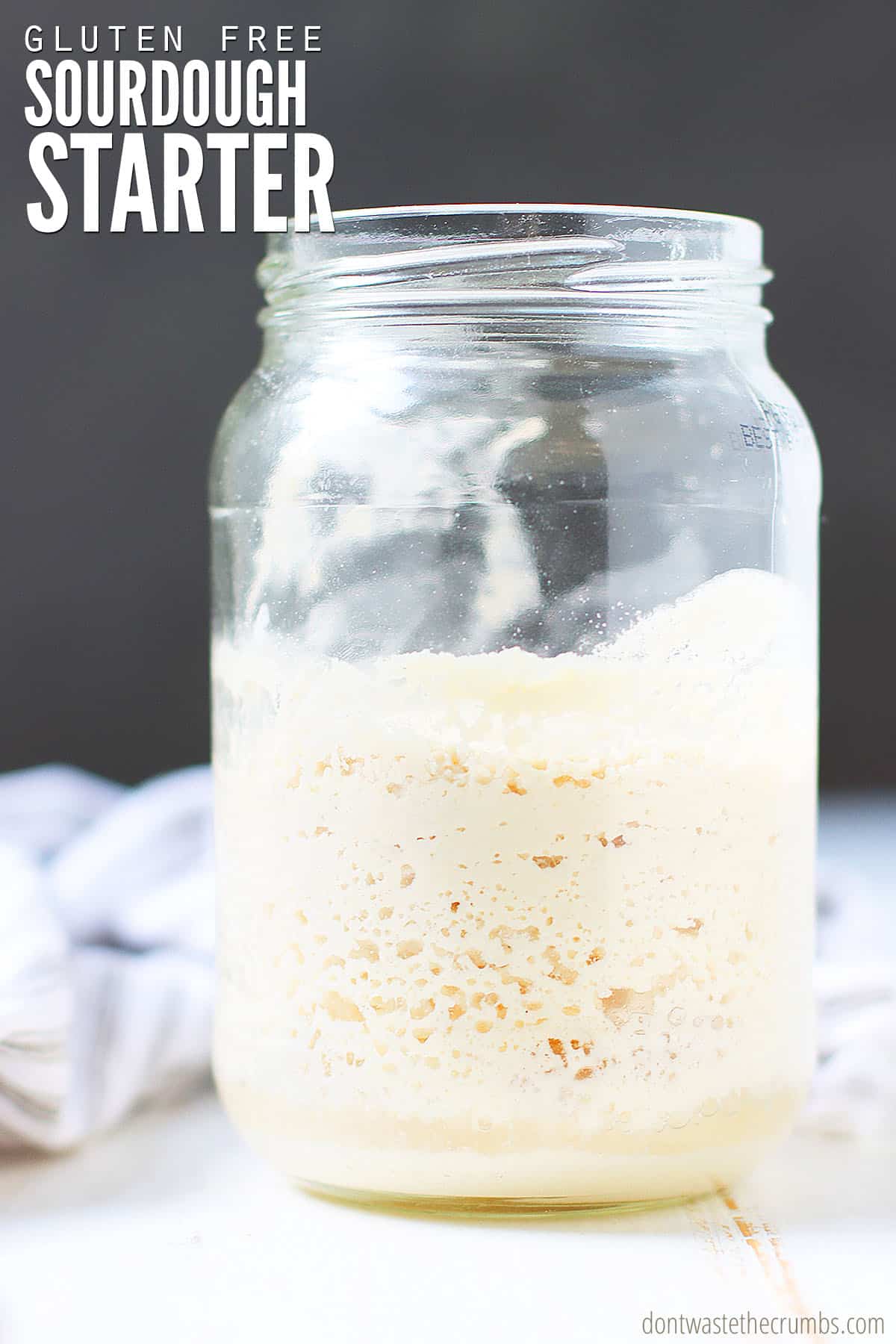
You know there’s a great love for sourdough when people all across the real food arena unite in asking the same question:
Can you make a gluten-free sourdough starter?
1 in 5 Americans eats gluten-free for various reasons, so the question isn’t surprising. So, in an attempt to answer this question, there’s been another food project in my kitchen for the past 10 days. I’m trying yet again to capture wild yeast from thin air.
The consistency of my gluten free sourdough starter looks a lot like cream of wheat…you know, the breakfast cereal? But thinner (and smellier). It definitely doesn’t look like the “soupy flour” mixture from the ordinary sourdough starter.
In fact, just about everything was different about this gluten-free sourdough starter, except three things that stayed the same:
- It only required flour and water.
- Even with an extra feeding, it wasn’t much work.
- It was a success!
So, to answer the question, yes, my dear sweet gluten-free friends, you can!
Note: Be sure to read through the entire tutorial and additional recipe tips before starting your gluten-free sourdough.
INGREDIENTS FOR MAKING YOUR OWN GLUTEN-FREE SOURDOUGH STARTER
- brown rice flour
- cold (or room temperature) filtered water
Note: Chlorine or hard water can hinder the growth of your sourdough starter. Use filtered water to avoid those issues found in tap water.
Make sure to have a large bowl (approx. gallon-size) with a lid for the first week as you establish your gluten-free sourdough starter.
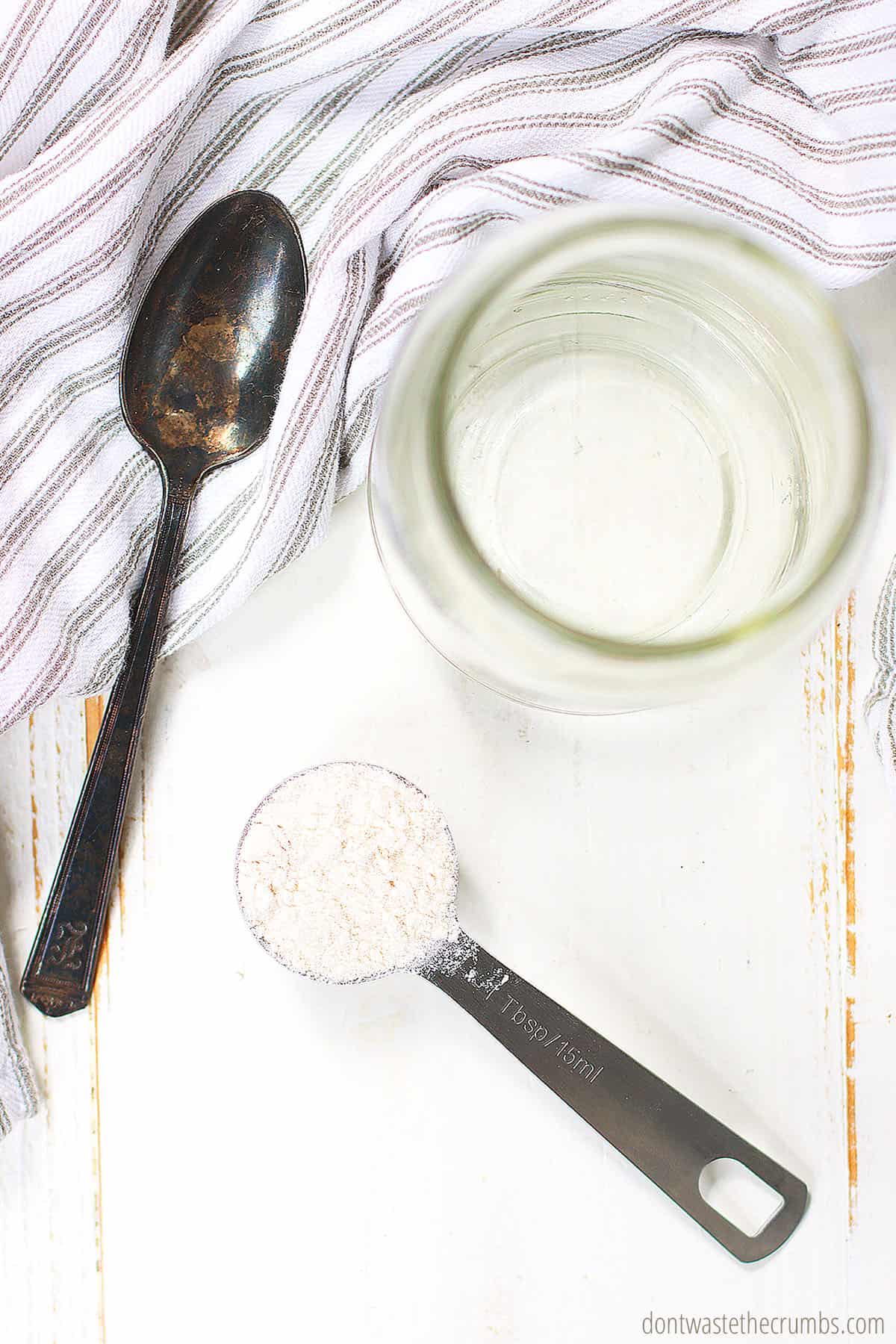
GLUTEN FREE SOURDOUGH STARTER RECIPE INSTRUCTIONS
Step 1. In a large bowl, combine ½ cup of flour with ½ cup of water and stir until all the lumps are gone. The mixture will be very thin and soupy. Lightly cover the bowl with a lid, leaving it cracked so that air can flow freely. If bugs and insects are an issue, you may cover the bowl with cheesecloth instead and secure it with a rubber band.
Step 2. Place the bowl in a warm area where it can sit undisturbed. This could be outside on a patio, on a kitchen counter, or in a pantry cabinet. Put it somewhere you can see it so that you remember to feed it!
Step 3. Every day, for the next seven days, feed the starter three times a day at approximately the same time. For best results, try to feed the starter at even intervals. For example, 6 am (or when you first wake up), 2 pm (just after lunch), and 10 pm (right before going to bed).
Step 4. At each feeding, feed the starter ½ cup of flour with enough water to mix thoroughly, usually ¼ to ½ cup, for a total of ¾ to 1 ½ cups of flour mixture each day. At each feeding, stir well, re-cover, and allow it to sit.
Step 5. The starter may or may not go through a bubbly stage and if it does, it may not be very noticeable. The starter may smell foul around days 2-4, very much like rotten eggs.
The smell is not an indication of contamination; rather, it is the natural smell of wild yeast combined with brown rice flour. The smell should subside and become pleasant by day 6-7.
Note: Once established, the gluten-free sourdough starter will go through a bubbly and frothy stage and eventually subside. The starter will smell like yeast and/or wine, but the smell should always be pleasant. If the starter ever smells sour or rancid, or if you see any white, orange, or pink film or mold, it has been contaminated and should be thrown away.
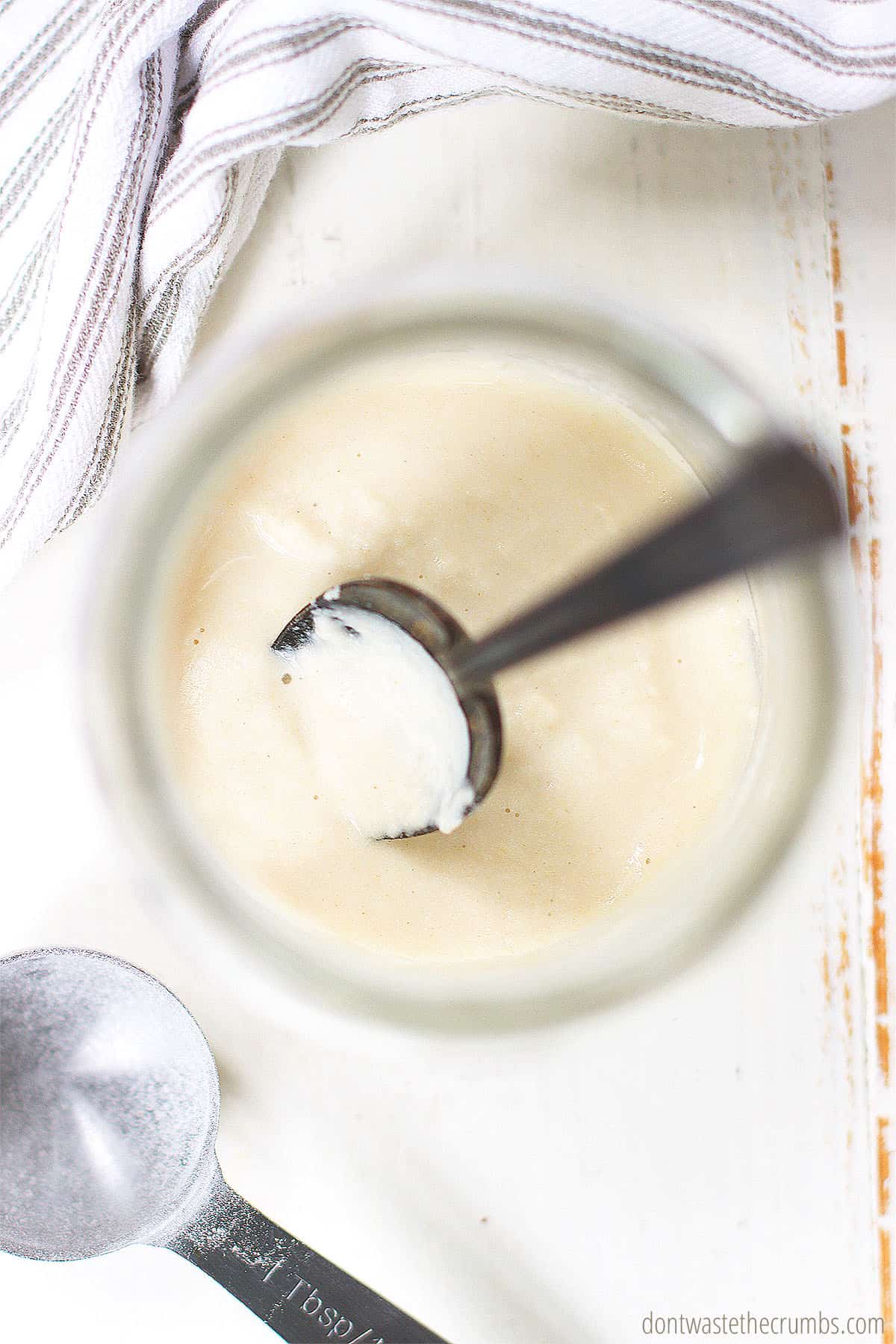
VISUAL PROCESS OF SOURDOUGH STARTER GLUTEN FREE
DAY 1
- This is what the starter looks like when it’s first mixed together and what it looked like after one full day of feeding. No noticeable changes.
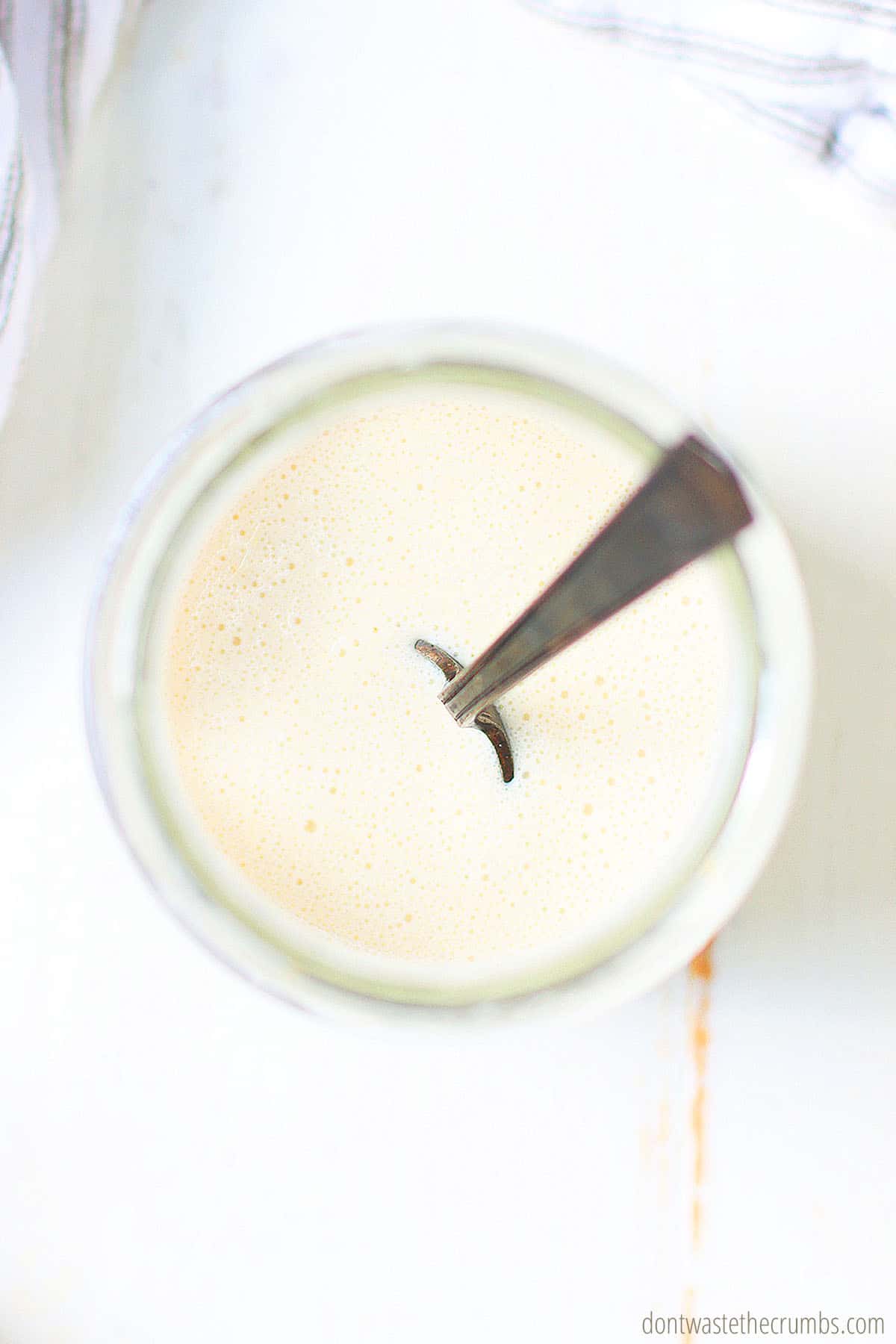
DAY 2
- We have wild yeast! There are some large bubbles and some small bubbles visible through the side of the bowl.
- The surface will look like cracked clay. There may or may not be visible bubbles on the surface of the starter.
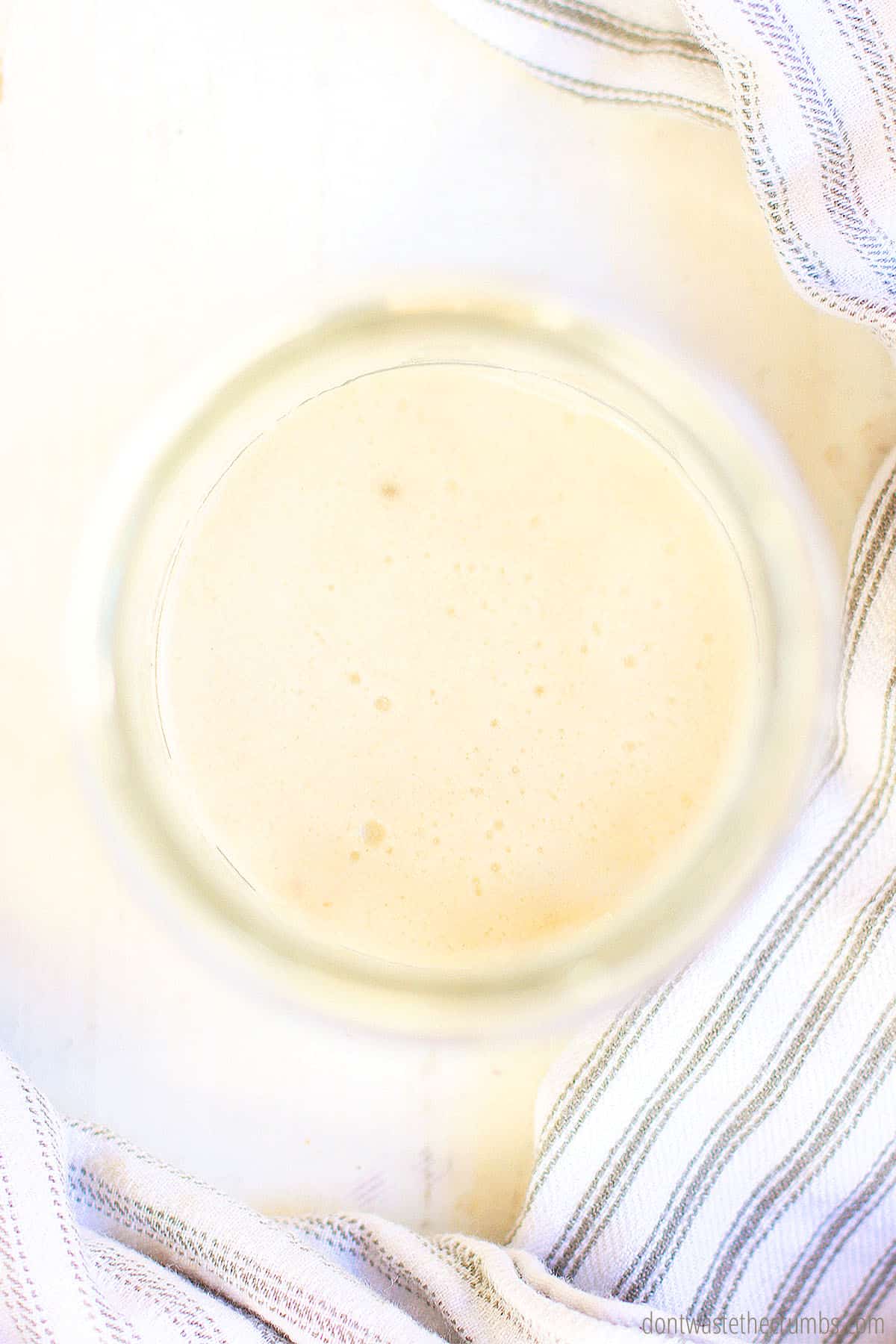
DAY 3
- Good news! The yeast is multiplying at an exponential rate. There are more of the larger bubbles and even more of the smaller bubbles.
- Again, the surface will look like cracked clay, and it may or may not have visible bubbles on the surface of the starter.
- You will notice that as you stir, the starter will lack the stringy, spongey feel that traditional sourdough has. This is normal. The starter may begin to have an odor. Keep feeding as directed.
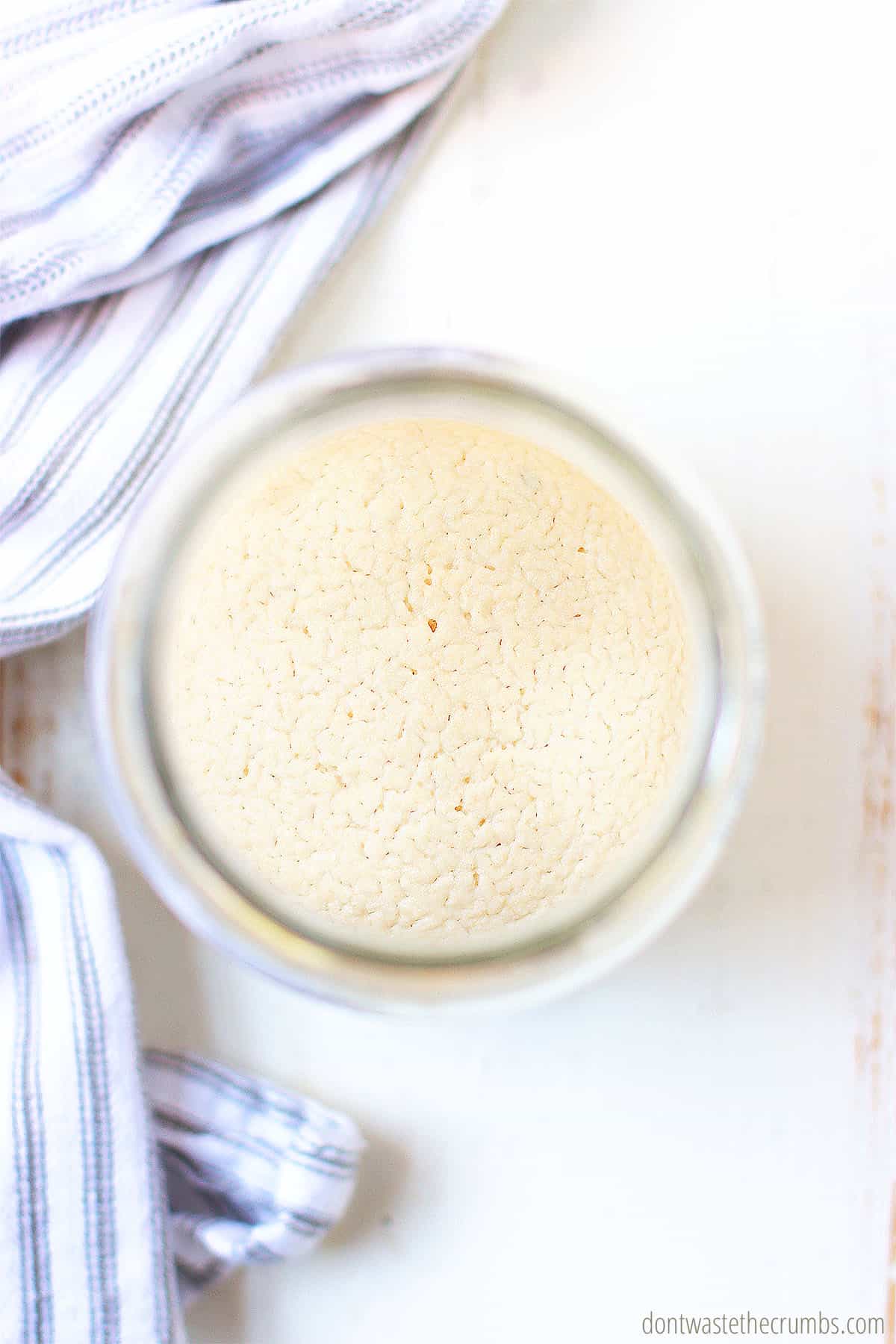
DAYS 4-7
- The bubbles begin to become equal in size and evenly distributed throughout the starter.
- Odors should subside and the starter should smell like sweet yeast by day 7.
- Approximately 2-3 hours after feeding, the starter should reach its peak and create a dome on top.
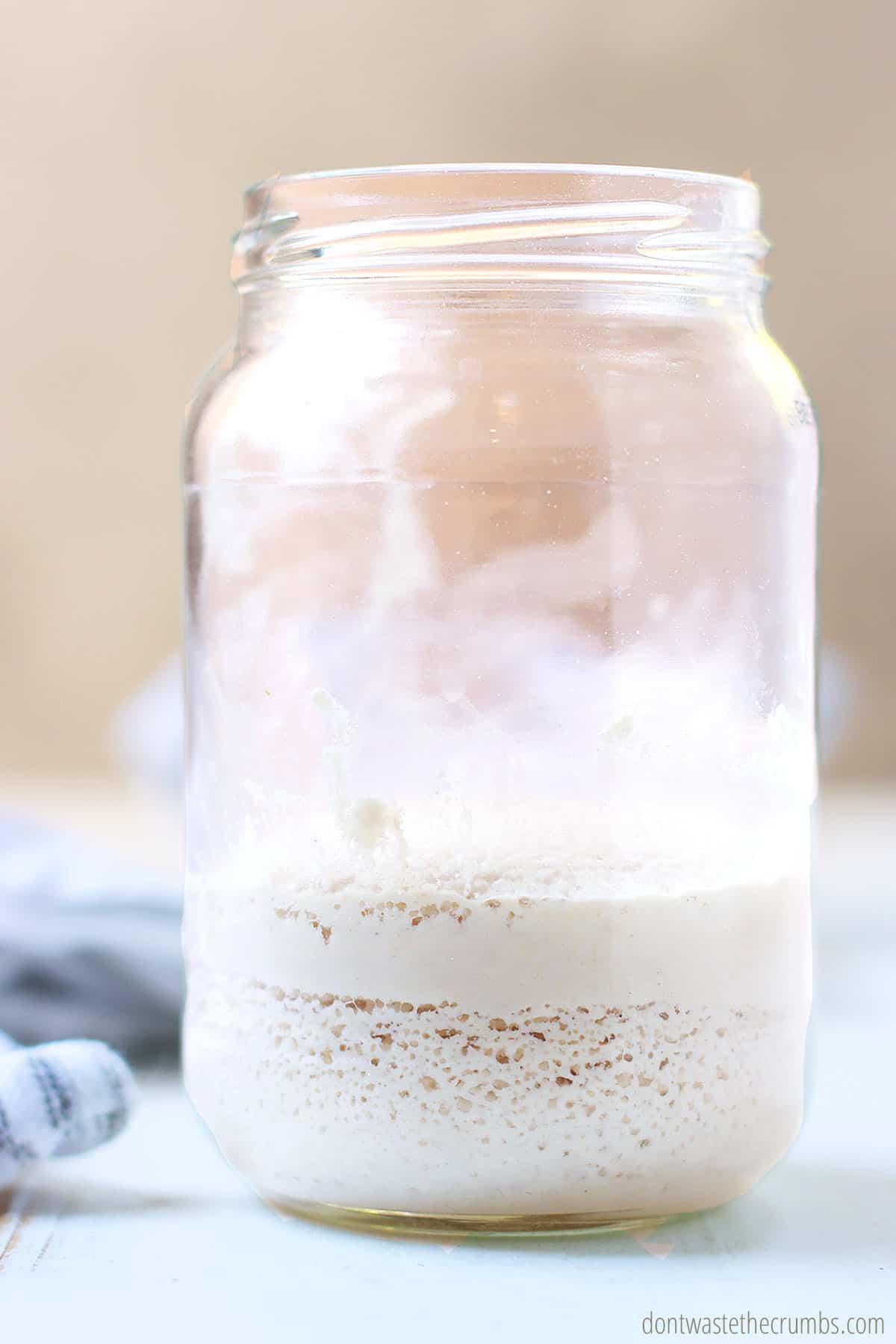
FEEDING SOURDOUGH STARTER
Once the starter is officially created, it enters maintenance mode. The frequency you choose for feeding sourdough starter is determined by how much starter you need and how often you plan to use it.
- Once a week: At a minimum, the starter can be kept in the refrigerator and fed once a week merely to sustain the life of the captured wild yeast.
- Daily: You can continue to feed it daily as you have been, and in another seven days, there will be enough starter for another batch of bread.
- Smaller amounts: You can also feed your starter as little as one tablespoon of gluten free flour and water for every two cups of starter – enough to continue daily growth but not produce a large quantity of starter. (One quart of starter would be fed with two tablespoons).
However frequently or infrequently you decide to feed your starter, the yeast thrives best when it’s fed regularly and consistently. Choose your time frame and quantity and stick with it as best as you can.
PREPPING THE REFRIGERATED STARTER FOR BAKING
Yeast grows incredibly slow at refrigeration temperatures, which is why you can get away with feeding it only once a week. In order for the yeast to successfully leaven a batch of bread, it must be “revived”, so to speak.
The steps are below, along with an example to help you better understand the time frame involved.
- Three and a half days before you plan to bake bread, remove the starter from the fridge and allow it to come to room temperature. (Monday night)
- Once the starter is at room temperature, feed with equal parts flour and water. (Tuesday morning)
- Feed the starter two more times that day, around lunch and again before bed. (Tuesday afternoon and evening)
- On the morning of day three, feed the starter again. If the starter domes after 2-3 hours, you are ready to bake bread. If the starter does not dome, continue feeding three times daily until there is foam and liquid. (Wednesday morning)
ADDITIONAL GLUTEN-FREE SOURDOUGH STARTER TIPS
- One 22 oz package of brown rice flour is the exact amount needed for this recipe. If you want to continue to feed your starter brown rice flour after the first seven days, wish to have a greater quantity of starter after the first seven days, or want to use brown rice flour to bake with your starter, you will need at least two bags of flour.
- Excess liquid did not collect on the surface of this gluten-free starter. If yours does, you can pour it down the drain or stir it into the starter.
- If your starter outgrows your bowl, you may split it between two bowls. Continue the feeding process, dividing the flour and water between the bowls (¼ cup of each, for each bowl).
- If you are culturing other items simultaneously, be sure to leave at least 3-5 feet of space between each item so the yeasts do not cross-contaminate. (Sourdough won’t make your kefir “bad,” but both cultures can weaken over time. Best just to keep them apart.)
- Always allow a bit of room for expansion by discarding some starter and leaving approximately ½ cup of starter to feed. This ensures you have enough yeast to continue fermenting at the same pace you have been. We made sure to test this gluten free starter discard in gluten free sourdough pancakes, and they were good!
- With the time involved in “reviving” refrigerated sourdough, it’s often easier to keep the starter at room temperature and reduce the feedings to only a tablespoon or two daily.
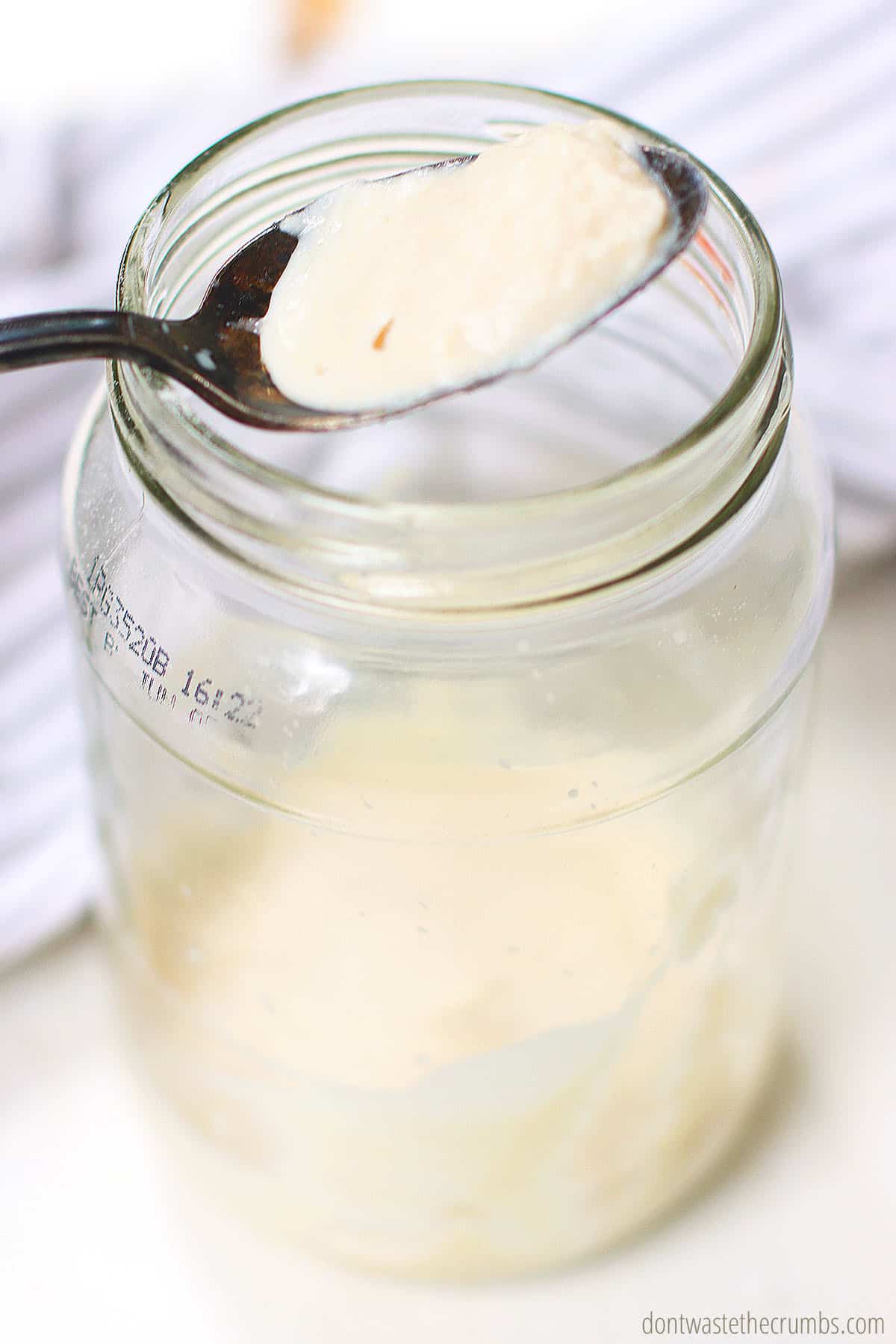
GLUTEN FREE SOURDOUGH STARTER FAQS
What is the best flour to use for gluten-free sourdough starter?
In my opinion, the best flour for gluten-free sourdough is brown rice flour because it is a whole grain flour.
You may use white rice flour, but using brown rice will give you more nutrients. Other options include gluten free flours or a commercial gluten-free flour blend (like this one).
Is sourdough better for gluten intolerance?
Sourdough can be a good option for those with gluten intolerance, IBS, or gluten sensitivity. It contains a lower level of gluten.
Does sourdough bread have gluten?
Sourdough bread recipes made with wheat flour still has gluten, although it has a lower level of gluten. This gluten free sourdough starter contains brown rice flour instead, so it does not have gluten.
Can I throw leftover dough scraps back into my gluten-free sourdough starter?
While we don’t want to waste food, the dough tends to have other ingredients too, like salt, eggs, butter, etc. and that wouldn’t be a good environment for your starter.
Instead, freeze your dough scraps, and when you have enough, fry them up and coat them in cinnamon sugar for a homemade version of donuts.
MORE GLUTEN-FREE RECIPES
- Einkorn Pizza Dough
- Mini Chocolate Chip Scones
- Einkorn Coffee Cake
- Homemade Cassava Flour Tortillas (Gluten-free, Grain-free)
- Almond Crusted Chicken
- Healthy Thumbprint Cookies
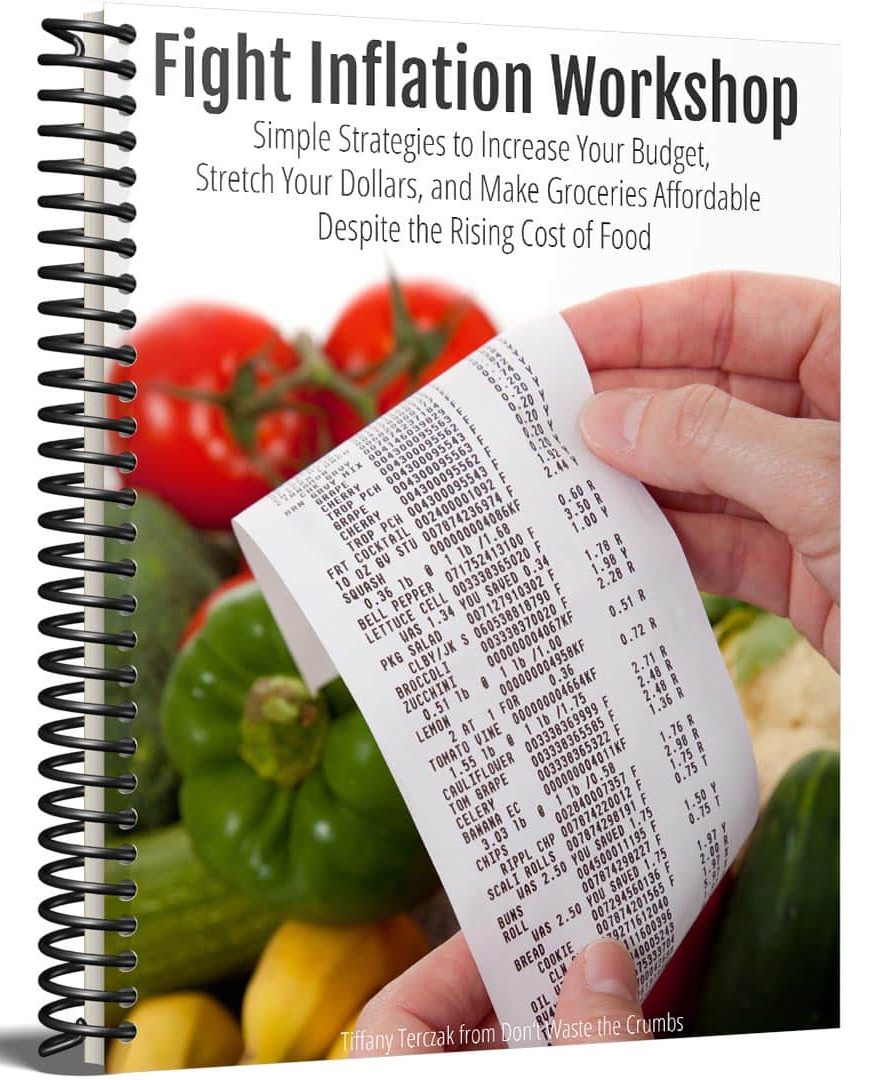

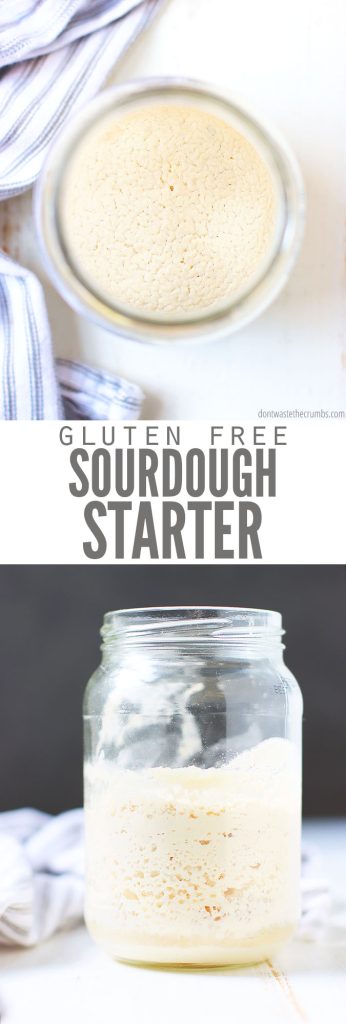
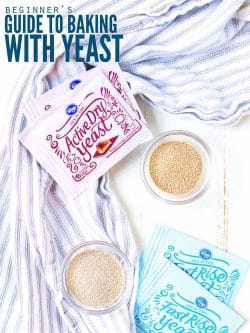
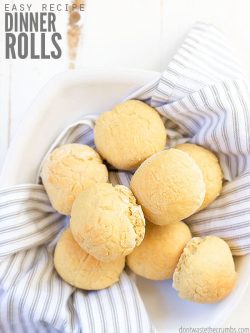
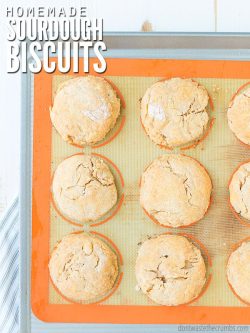
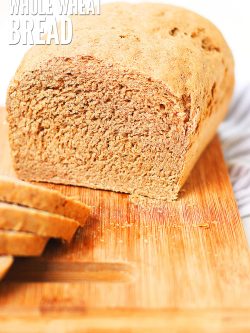

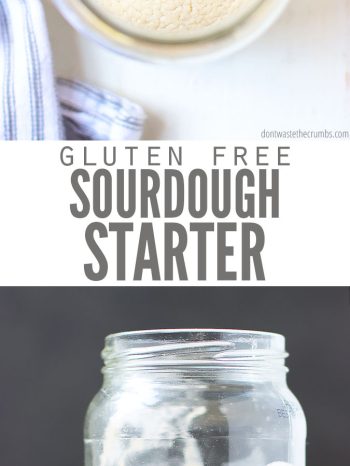
Ok so I’ve never made any kind of bread before.. did I miss some instructions on how to cook the bread?
This recipe Morgan is just for the starter – not the bread itself. I’m not an expert at GF bread, so I would suggest searching for a tried-and-true GF sourdough bread if that’s what you’re looking for. If you want regular bread that isn’t GF, I have TONS of recipes here: https://dontwastethecrumbs.com/category/recipes/breads2/
Thank you so much for the info. I am trying to copy your instructions for
coconut bread. We have a local company that produces a fluffy
coconut bread that lists only coconut flour and coconut as the ingredients.
I can only assume they are using a culture method to give it some rise.
Any chance you could experiment with coconut flour?
is it possible for me to use another grain or flour in the place of the rice flour? My husband is allergic to rice, but misses sourdough terribly 🙂
Hi Meg! I’m not sure; I’ve only tried rice flour 🙁
Hello Tiffany,
Am i correct to assume that if I start with rice, I cant’ feed it another grain, like sorghum or buckwheat, I’d have to start a new culture with the new flour? But I can add the other flours while making the bread, non?
Thanks!
Hi Rachelle! In general, when you’re first creating a starter, it’s best to use the same flour until it’s fully active. When you know it’s established, you can gradually feed it something else to convert it to another type of starter. Starters thrive on consistency though. Yes, you can use whatever flours you have on hand to make the bread. 🙂
While studying different info regarding a regular wheat sourdough starter, I came upon a great tutorial on yumarama.com. With only flour and water at the start, you tend to get a quick growth of leuconostoc bacteria (which stinks) first. Since you saw bubbles forming early on, that is probably what was growing. Yeast takes longer to colonize, but the bacteria sets up a nice acidic environment for it. When your starter gets acidic, the bacteria back off, encouraging the yeast to take over. If the leuconostoc doesn’t grow, you won’t have much bubbling until about day 3 or so. It is recommended to start with pineapple juice instead of water. This helps to skip the leuconostoc stage, and gets the yeast growing faster. Thus said, I haven’t tried it on rice flour yet.
That would explain why established starters do so much better in breads than new ones. Thanks Aleece for sharing!
Hi,
I am just about to start making the starter but I can’t see a recipe for a loaf made from the starter. Do you have one?
I am really looking forward to try this as it seems so simple to other methods I have used – fingers crossed.
thanks
Ciaran
Hi Ciaran! You’ll find several GF sourdough recipes at the bottom of this guest post: http://wholenewmom.com/recipes/gluten-free-sourdough-starter/ I wasn’t able to try them personally b/c I’m not GF and don’t keep the flours on hand. I bet you’ll be able to experiment with at least one though! 🙂
Tiffany,
I’m recently on the GF train and am very excited to try out this bread recipe! Quick question though – You say in the ingredient list that feeding the bread will require 4 cups of GF flour, and while reading through the instructions it says to feed the bread 3 times per day. Are you feeding a 1/2 cup at each feeding, or a 1/2 cup for each day total (divided into 3 equal portions)? Thanks!
Hi Drew! I feed my starters 1/2 cup each, 3x day. My very first starter was 1 cup, but I found that it produced too much starter for me to use up in a short amount of time, so I reduced it to 1/2 cup and that’s perfect for us now. 4 cups flour with 1/2 cup feeding 3x/day will get you through 2 1/2 days of starter. At that point, you’ll likely know whether you need more GF flour, or if your starter was a bust. 🙂
Have a very happy rye sourdough going, am going to now attempt a teff sourdough. We have had a lot of luck with this recipe for a wheat free (I can’t say gluten free because I use a rye sourdough) sourdough bread, you might want to try it:
http://www.artofglutenfreebaking.com/2010/10/sourdough-bread-boule-gluten-free/
and what our attempt looks like:
http://yumvee.wordpress.com/2013/09/21/wheat-free-bread/
I’m keen to get a GF sourdough going so that I can pass it on to others who are gluten intolerant, along with this recipe (and a bunch of other sourdough recipes, like for muffins, cookies & quickbread).
Thanks for the instructions… fingers crossed for a happy teff starter soon!
I learned 2 years ago that I am allergic to corn, wheat, rice, soy, tomato and peanut. I love, love, love sourdough bread (having lived in Alaska for five years), but have not been able to eat any bread since I learned of these allergies. Your recipe sounds wonderful, and I really want to try, but what kind of flour can I use that will be successful? All the recipes I have seen so far use rice flour and one without rice flour used xanthan gum which is apparently made from corn. I really need some help and good advice on this subject. All the gf breads I have purchased taste like cardboard and are hard, exceedingly dry, too dense and unpleasant to eat…even warmed with melted butter.
Have you tried sorghum or a DIY all-purpose GF flour? I’ve also heard teff works too. Check out this post for more GF ideas Linda!
I am not able to have sorghum because of food allergies. I know she said we could use tiff and place of it. Do you have any other type flower that it could be replaced with? I’m allergic to eggs as well, can you think of any substitute?
In baking, flax seed meal works for egg replacement!
Hi Linda, I realize this is a very old post, but in case you come back to read I thought I’d reply. I just came across a recipe that uses psyllium husk as the binding agent (rather than xanthan or other gums). This link will only take you to the recipe using the psyllium not the starter, and I would think you could use the starter from this page to make it. http://glutenfreegourmand.blogspot.ca/2014/03/gf-24-hour-sourdough-bread-recipe.html (Tiffany, if it’s not okay to post from other sites, please feel free to remove it. 🙂 )
That’s a super helpful link Anastasia – you’re good to go and thanks for sharing!
My mom is intolerant/borderline allergic to corn and we found that a binder called Guar Gum (made from the guar bean) is actually a better binder is gluten free and makes the bread rise without falling as most times happens with xanthan gum. We replace the xanthan gum in most recipes now and have found that it works 100X better even in a cake from scratch!
Is sourdough more nutritious than plain rice?
What about its oxalate content?
Thanks
Hi Alice,
I think sourdough has more nutrition than plain white rice, but it’s kinda like comparing apples to oranges. They’re both grains, just different.
I’m not familiar with oxalate in regards to sourdough, so unfortunately I don’t have much to offer. Hopefully another reader will be able to add some insight!
You’re welcome Kimball!
Hello, I am in the process of making a brown rice sourdough starter. However, the rice and water seem to separate between feedings. It seems to be progressing ok otherwise. Should I remove some of the separation on top? Thanks.
That’s up to you, Chris, but that liquid you’re seeing is likely hooch – it’s the offspring of the good bacteria eating the naturally present sugars in the flour. Just stir it back in before feeding!
I know the reasons you are using brown rice, and I used it for the same reasons, but I came across this a while ago and have changed my mind.
http://chriskresser.com/arsenic-in-rice-how-concerned-should-you-be
Thanks for the link Ann. I plan to address white vs. brown rice next week and this will help with the research 🙂 ~Tiffany
I’m so excited to try this! I’m so glad you put this together. Thanks so much for sharing this on Waste Not Want Not Wednesday, I’ve pinned it : )
You should teach classes professionally, Tiffany! You have lots of great tips and a fantastic tutorial here! I still haven’t started my sourdough yet, and this reminds me to get to it. I love how you explain the process step by step, so we understand what is going on. I am writing it down on my list, and will start it this weekend!
LOL – you’d laugh to hear that I used to teach college courses Andrea! Not in food of course, but that would have been fun! Get going on that starter Girl!!
Thank you. The pictures were very helpful. I’ve made a gf starter several times using different types of flours (teff works great). But what I can’t seem to do is make a decent loaf of gf sourdough bread. I’ve tried several recipes and they’ve all resulted in bricks.
Lee, I grind rice in my grain mill to make flour. It works just fine and it is loads cheaper than buying rice flour.
I have been gluten-free all my life. Whenever my husband and I visit San Francisco, he orders clam chowder with sour dough bread. It always smells so delicious, but I have never tried it. Thank you for this recipe; I can’t wait to get this starter started! I have a link up party if you are interested in sharing it.
You’re missing out Laurie! Sourdough has such a delightful tang that compliments so many foods. Next time you order some too! 😉 ~Tiffany
Such a helpful blog!
I am new to baking so I’m clueless!!! My friends have all recommended Sourdough’s International’s sourdough starter to me, so I’m going to give it a go!!!
Good luck Rachael! I’ve got another post coming tomorrow involving some FAQ’s. I hope you find that helpful as well! 🙂
I’m not clear on discarding some starter, is that every feeding? That’s how I do my traditional starter.
Hi Melody,
I discarded with my very first starter and none at all with my second and didn’t see any difference between the two. I didn’t discard with the GF version either and all worked out well! 🙂 ~Tiffany
Do you also have recipes for bread, pancakes,etc. using this starter? Thanks!
Hi Julz,
This starter will work in this sourdough pancake recipe: https://dontwastethecrumbs.com/2013/06/yummy-recipe-toasted-coconut-and-banana-sourdough-pancakes/
I’ve only tried one bread recipe, but to be honest, I totally botched the recipe in the first place (as it turns out you CAN’T use only brown rice flour in GF bread 😉 ). Most GF bread recipes call for a variety of flours that I don’t keep in my kitchen, (i.e. tapioca, sorghum) but if you already have them, I’d try this recipe for sure: http://www.naturallyknockedup.com/gluten-free-sourdough-bread/.
~Tiffany
Hi Lee,
You should be able to use a grain mill to make your own brown rice flour at home. I haven’t done it myself (I don’t own a mill), but brown rice is roughly the same size as wheat berries and those don’t seem to much of a problem. Enjoy your sourdough! 🙂 ~Tiffany